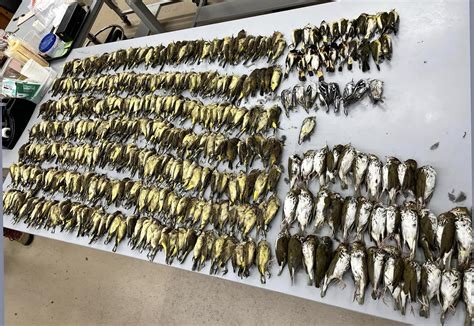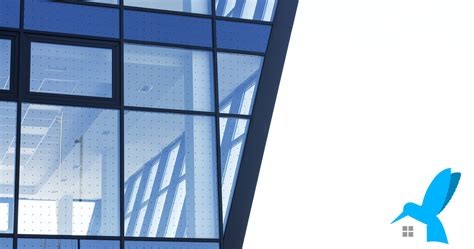
Migratory birds die by the billions when they fly into buildings. One solution is pure genius: put a a pattern on the glass so birds see it as an object they can’t fly through.
Architects and engineers often view their work as triumphs over nature—dams that hold back rivers, tall buildings that defy gravity, and wind turbines that harness the wind. But nature pays a price. Salmon can no longer migrate, birds collide with tall buildings, and wind turbines slash through flocks. The toll on birds alone reaches into the billions each year. That’s right: billions.
These losses can disrupt entire bird populations. Collisions with buildings are cited as one factor behind the 30% decline in North American wild bird populations.
The Day it Rained Birds
Nearly a thousand birds died by the morning of October 9, 2023, after flocks repeatedly flew into McCormick Place along Chicago’s lakefront. The center had participated in the city’s “Lights Out” program—turning off lights at night to reduce bird strikes—but that evening, the lights had been left on for an event.
Until then, no one had seen so many birds fall from the sky at once—not McCormick staff, not the city, not the Field Museum.
Douglas Stotz, a conservation ecologist at the Field Museum who monitors bird collisions around McCormick Place during migration season, had never witnessed anything like it.
“In one night, we had a year’s worth of death,” he told NPR, noting that typically 1,000 to 2,000 birds die each year after colliding with the building.
Why Do Birds Fly into Buildings?
Some might blame the birds. Sure, let’s blame the victims. Why can’t they watch where they’re going? The answer lies in bird vision. Bird experts say birds simply can’t process glass the way humans do. They may mistake sky reflections for open space or be drawn to bright lights, which act as beacons.
While the occasional window-strike may go unnoticed, 964 dead birds and hundreds of injured ones were too much for McCormick Place, the people of Chicago, and the State of Illinois.
I’m Seeing Spots
The state spent $1.2 million to install patterned plastic film over the exterior glass of the Lakeside Center of McCormick Place. The film features dots that birds can see, helping them avoid collisions.
McCormick Place
McCormick Place is the largest convention center in North America. It hosts IMTS and numerous other events. The complex includes three massive buildings: McCormick Place North, South, and Lakeside Center (formerly McCormick Place East). The Lakeside Center, with its large glass facade, is where most bird collisions occur.
In the summer of 2024, McCormick Place Lakeside Center undertook a major bird-safety project, installing bird-safe window film on approximately 120,000 square feet of glass—an area roughly equal to two football fields. The dotted film makes the glass visible to birds, thereby reducing the number of bird strikes. Since the installation, collisions have dropped by over 95%, according to the Field Museum.
The $1.2 million project, funded by the state, was completed in three months and now serves as a model for bird-friendly building design.
Inside the McCormick Project

Feather Friendly, the company behind the film, had been engaged to McCormick Place for quite some time.
“We had been working the McCormick account for a while,” said Paul Groleau, Vice President of Feather Friendly. “When the big event happened, and the scale of the bird deaths made national news, it really pushed the project forward.”
Feather Friendly’s solution is designed to strike a balance between safety and aesthetics. “Our film is unlike any other. It leaves only a pattern-no haze, no tint, no visual obstruction for the people inside,” Groleau explained. “It’s proven to be highly effective, and we’re proud that McCormick Place is one of our largest completed projects to date.”
The Bigger Picture
This event highlights a larger problem: bird-window collisions in urban areas. Each year, an estimated 100 million to 1 billion birds die in the U.S. after striking glass. To help reduce these fatalities, cities like Chicago are adopting bird-friendly building practices and “Lights Out” programs to minimize lighting during migration seasons.
More About Bird Film
Dot-pattern window films are an effective solution to prevent bird collisions. These films—featuring dots, stripes, or other patterns—make glass visible to birds and help them avoid flying into it.
Feather Friendly offers products ranging from DIY kits to large-scale commercial applications. The McCormick Place project—its largest so far—demonstrates what’s possible when institutions and public agencies act on behalf of wildlife.
McCormick Place officials are thrilled—not only did the state cover the full cost, but the center now gets credit for being bird-friendly. Other cities and building owners should take note.
References
- “Nearly 1,000 Birds Die After Striking Chicago Building,” Amanda Holpuch, New York Times, October 8, 2023
- “An Illinois Building Was a Bird Killer. A Simple Change Made a World of Difference,” Catrin Einhorn, New York Times, May 21, 2025
